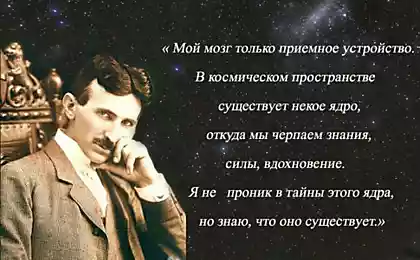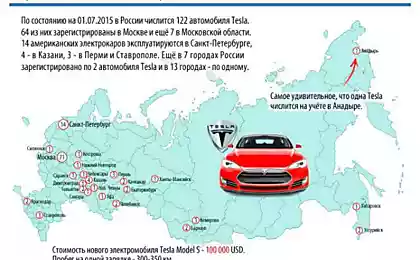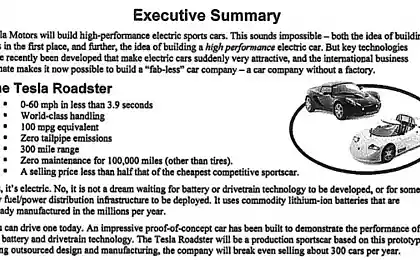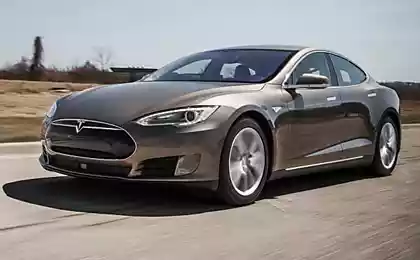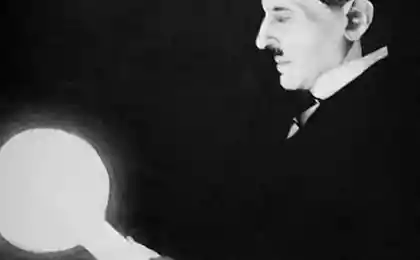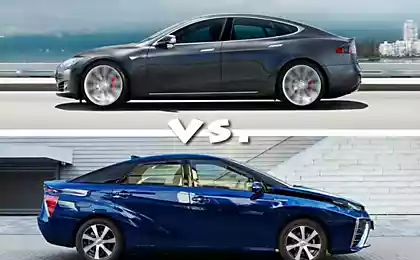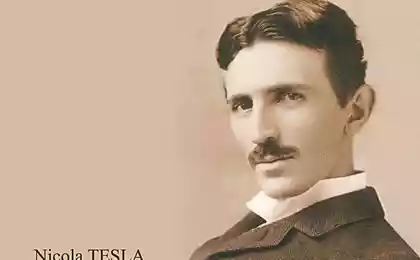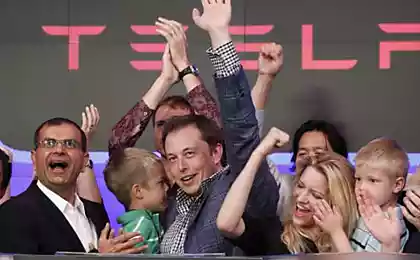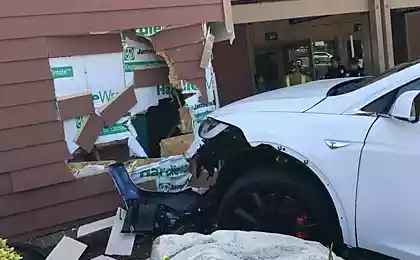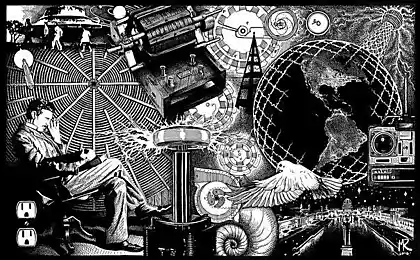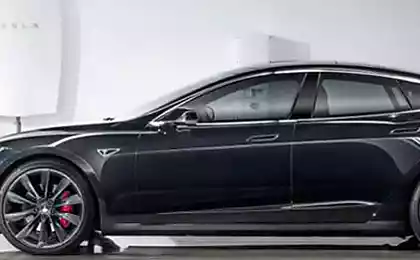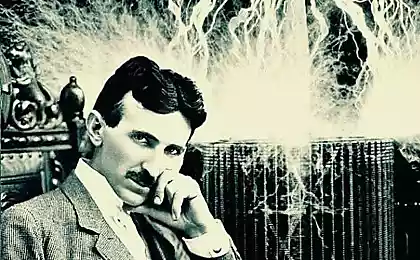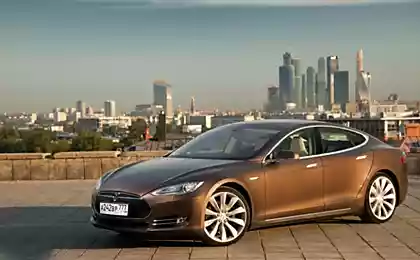503
Co-founder of Tesla Motors plans to electrify commercial trucks
Twelve years ago, Ian Wright (Ian Wright) and his colleagues engineers started in Silicone valley campaign called Tesla Motors, which has transformed the market of electric vehicles.
Now, co-founder of Tesla wants to electrify noisy and gas-guzzling trucks that are delivering supplies, transporting trash and make frequent stops on city streets.
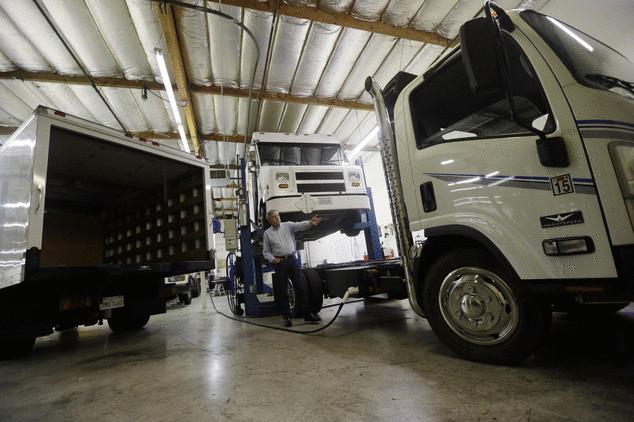
His latest venture, called Wrightspeed, collect the truck full. He sells electric powertrain that can be installed on medium and heavy commercial vehicles, which will make them cleaner, quieter and more energy efficient.
"We will save on fuel. We also want to save on maintenance, and create conditions under which compliance with emission standards in the environment will be much easier," says Wright, an engineer from New Zealand, who left him when she was still a small startup in 2005.

Wrightspeed is one of a growing number of companies who are trying to transform the market for commercial trucks, which consume billions of gallons of fuel and emit tons of carbon dioxide, nitrogen oxide and other pollutants.
While more and more consumers are switching to electric cars such as the Nissan Leaf, Chevy Volt or Tesla Model S, owners of commercial fleets are convinced that to replace their diesel trucks is not easy.

"It requires a lot of technological ambition to make it in this old and solid market," said mark Duvall (Mark Duvall), head of scientific research Electric Power Research Institute in Palo Alto.
"If you want to sell to the owner of the electric truck fleet, you have to convince him that it's better than what he already uses."
Company Wright sets the power units of the FedEx vans and trucks for the Ratto Group, a recycling company of waste in Santa Rosa.
Its plug-in powertrain with an electric motor, battery setup and an onboard genset that runs on diesel fuel or natural gas, and recharges the battery when its charge approaches the lower boundary.
The cost of equipment ranges from $ 150,000 to $ 200,000, while a new truck costs about $ 500,000.
To meet the growing demand, Wrightspeed is preparing to move into a former airplane hangar on a decommissioned air base, the U.S. Navy in Alameda.
The company plans to expand its workforce from 25 to 250 employees over the next three years, Wright said.
When Wright left Tesla to start Wrightspeed, he planned to build a high-performance electric sports car, but was unable to raise money from investors, because the market was not large enough.
So Wright moved and is targeting approximately 2.2 million commercial trucks in the U.S., which burned about 20 times more fuel than a car and are the main source of air pollution and greenhouse gas emissions.
Wrightspeed has received venture capital in Silicon valley and guaranteed subsidies from the California energy Commission that is funding alternative fuel technologies that could help reduce the state dependence on fossil fuels.
Governor Jerry brown wants to reduce the use of oil in cars and trucks by 50 percent by 2030.
A truck with a powertrain, Wrightspeed can pass from the battery a distance of about 30 miles to the moment when turbine that runs on diesel fuel or natural gas, will recharge the battery.
"The system approximately doubles the fuel efficiency of trucks and reduce maintenance costs," said Wright.published
P. S. And remember, just changing your mind — together we change the world! ©
Source: www.facepla.net/the-news/eco-transportation-mnu/5096-tesla-motors-коммерческие-грузовики.html
Now, co-founder of Tesla wants to electrify noisy and gas-guzzling trucks that are delivering supplies, transporting trash and make frequent stops on city streets.

His latest venture, called Wrightspeed, collect the truck full. He sells electric powertrain that can be installed on medium and heavy commercial vehicles, which will make them cleaner, quieter and more energy efficient.
"We will save on fuel. We also want to save on maintenance, and create conditions under which compliance with emission standards in the environment will be much easier," says Wright, an engineer from New Zealand, who left him when she was still a small startup in 2005.

Wrightspeed is one of a growing number of companies who are trying to transform the market for commercial trucks, which consume billions of gallons of fuel and emit tons of carbon dioxide, nitrogen oxide and other pollutants.
While more and more consumers are switching to electric cars such as the Nissan Leaf, Chevy Volt or Tesla Model S, owners of commercial fleets are convinced that to replace their diesel trucks is not easy.

"It requires a lot of technological ambition to make it in this old and solid market," said mark Duvall (Mark Duvall), head of scientific research Electric Power Research Institute in Palo Alto.
"If you want to sell to the owner of the electric truck fleet, you have to convince him that it's better than what he already uses."
Company Wright sets the power units of the FedEx vans and trucks for the Ratto Group, a recycling company of waste in Santa Rosa.
Its plug-in powertrain with an electric motor, battery setup and an onboard genset that runs on diesel fuel or natural gas, and recharges the battery when its charge approaches the lower boundary.
The cost of equipment ranges from $ 150,000 to $ 200,000, while a new truck costs about $ 500,000.
To meet the growing demand, Wrightspeed is preparing to move into a former airplane hangar on a decommissioned air base, the U.S. Navy in Alameda.
The company plans to expand its workforce from 25 to 250 employees over the next three years, Wright said.
When Wright left Tesla to start Wrightspeed, he planned to build a high-performance electric sports car, but was unable to raise money from investors, because the market was not large enough.
So Wright moved and is targeting approximately 2.2 million commercial trucks in the U.S., which burned about 20 times more fuel than a car and are the main source of air pollution and greenhouse gas emissions.
Wrightspeed has received venture capital in Silicon valley and guaranteed subsidies from the California energy Commission that is funding alternative fuel technologies that could help reduce the state dependence on fossil fuels.
Governor Jerry brown wants to reduce the use of oil in cars and trucks by 50 percent by 2030.
A truck with a powertrain, Wrightspeed can pass from the battery a distance of about 30 miles to the moment when turbine that runs on diesel fuel or natural gas, will recharge the battery.
"The system approximately doubles the fuel efficiency of trucks and reduce maintenance costs," said Wright.published
P. S. And remember, just changing your mind — together we change the world! ©
Source: www.facepla.net/the-news/eco-transportation-mnu/5096-tesla-motors-коммерческие-грузовики.html
